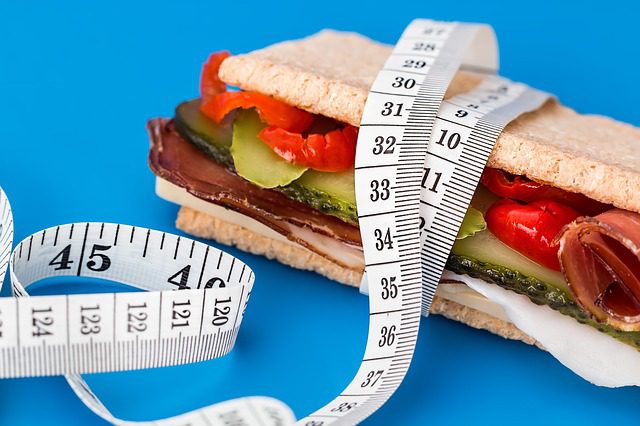Flexible Dieting is YOUR Lifestyle Diet
I can’t tell you how many times I’ve seen people start and then fail at a diet in a matter of seven days. The problem I find with most diets out there today is the fact that they all want you to remove an entire macronutrient from your nutrition. Honestly, that’s nearly impossible for the majority of the people out there to adhere to. And I completely understand why – it’s unrealistic. That’s why I personally love the flexible dieting lifestyle.
Why should you change your entire lifestyle when you can make minor changes and not need to remove anything from your nutrition? That piece of pizza you want – eat it. That slice of cheesecake you’ve been eyeing – eat it. I’m all about LIFESTYLE dieting where you work your macros around your individual lifestyle. Your diet revolves around you, not the other way around.

What is Flexible Dieting?
Flexible dieting (or IIFYM – if it fits your macros) is a diet that gives you complete flexibility over the food you consume. Now mind you, this is not an excuse to consume junk 24-7 just because it “fits your numbers.” Too many people fail using flexible dieting because they think it means it’s a free for all that they can consume junk all the time and still reach their goals. The foods you consume should still primarily be healthy options when it comes to your flexible dieting lifestyle. That being said, it still gives you the option and flexibility to consume foods what most would consider “off limits” on regular diets.
People are too concerned with eating clean all the time. Guess what? If you eat too many “clean foods” you can still gain weight! So, why not enjoy the food you put in your mouth and enjoy life rather than consuming chicken and broccoli at every meal? Tailor your food around your goals and leave some leeway for enjoyable foods. That’s the whole reason why so many people make the switch to a flexible dieting lifestyle.
If you want to have a bowl of ice cream at night, you’re able to. If you want to have a donut at the office with co-workers go ahead. The objective is to achieve your caloric intake and individual macronutrient ratio goals for the day. The next question that should come up is “how do I know if I’m hitting my numbers with flexible dieting?”
Flexible Dieting: A Diet to Fit YOUR Lifestyle
Flexible dieting (also knows as “if it fits your macros” or IIFYM) is a fantastic way for you to introduce healthy nutritional principles into your lifestyle. Does it force you to eliminate entire foods groups from your diet? Nope. Does it force you to follow an extremely restrictive list of food? Nope. So, what does it do then?
What if I were to tell you that you can have your cake and eat it too? Well, kind of. Here’s the gist of what flexible dieting is all about. Clearly, you know what “flexible” means already. With this lifestyle diet, nothing is “off-limits” in the sense you can never eat it ever again for as long as you shall live. That’s just stupid. Whoever follows those diets must be clinically insane. With flexible dieting, the model is everything in moderation. I know what you’re thinking… “Matt, I’ve heard that all the time and when I follow it, I still gain weight.” Cool. But, have you ever tracked your calories and macronutrients to hit your daily numbers? Aaaaaaah. There’s the difference.
Hitting Your Numbers Through a Flexible Dieting Lifestyle
In order to see the results you desire from your flexible dieting lifestyle, you want to focus more on how much you eat rather than what you eat. And in order to know how much you eat, you need to track your macronutrients (at least for now).
So many people eyeball their food and unfortunately, they are WAY off with their estimates. It’s important to understand what correct portions look like and in order to do that you need to weigh and track your food. Again, you don’t need to do it forever (even though many do and that’s preferred). But what it comes down to is that you don’t know what you don’t know.
Use an app like MyFitnessPal to track your macros and ensure you are hitting your caloric goal and macro goal each day. Once you get used to portions and hitting your numbers through flexible dieting, you can slowly move away from tracking, although, if you want the best results I’d highly recommend continuing to track.
Try to consume 80% healthy, non-processed foods during the day and fill in the remaining 20% with foods all of the experts and gurus out there would consider “bad” that you enjoy. Allowing yourself the opportunity to do such a thing is a major benefit and why so many people are loving the flexible dieting lifestyle.
When you utilize flexible dieting, you can live life and enjoy the process of losing weight and burning fat without feeling like you’re starving or depriving yourself. In all honesty, the best diet for you is the one you can stick to. So, stop with the yo-yo dieting and give flexible dieting a try. I’m willing to bet you’ll like the results and the way you feel – not to mention how easy it is to adhere to and follow.
If you are looking for new guilt-free meals where there are no foods that are “off limits” you definitely want to check out Macro Kitchen. You can take the macro ratios you have in MyFitnessPal and search directly for meals that match your exact ratios. It can help you save time and effort when it comes to planning your meals.
You Don’t Know What You Don’t Know
You’ve probably heard that saying before. And it’s true. You don’t know what you don’t know. How do you know if you’re in a caloric surplus or deficit? You don’t. You can’t eyeball your food and compute everything in your head to know the difference. That’s why in order to know where you’re at, you will need to track your foods. MyFitnessPal does a great job of simplifying the process for you. Simply download the free app to your smartphone and you’re good to go. The platform is extremely simple to use and navigate and allows you to put all of the food you consume each day into their tracking software. At any point of the day, you are able to go in and see where you are with your calories and macros without needing to do any math on your end.
Why is tracking important? Well, if you want that piece of cake, you can have it as long as it still puts you within your daily intake needs. Obviously, the rest of the day you will want to be a little more on the conservative side, but with flexible dieting, you have the means to enjoy all the foods you love – including what all of the “gurus” out there consider to be a “poor food choice.”
You need to know though, that flexible dieting isn’t a means for you to consume junk anytime you want just because it fits within your dietary parameters. You don’t want to fill up all of your carbohydrates for the day with French fries and milkshakes (as good as that may sound). You still want to eat nutrient-dense foods as much as possible.
With flexible dieting, it fits your lifestyle. You don’t need to give up carbs. You don’t need to give up fats. You don’t need to give up anything. If you meet your daily intake needs calorically and from a macronutrient standpoint and have it set for you to lose weight each week, following their parameters should have you losing weight and dropping body fat.
Nutrition and weight loss are truly a numbers game. While not all calories are created equal, it’s a matter of surplus versus deficit. If you eat more calories than you need for maintenance you will gain weight. If you eat fewer calories than needed for maintenance you will lose weight. It’s quite simple when you track everything and get a clear visual of where you are at any given moment during the day.
Stop depriving yourself of the foods you love. The more you tell yourself you can’t have something the more likely you are to crave it and end up binging on the food anyway and completely falling off the wagon. Or the more you deprive yourself, the worse you will make the dieting process. So, stop all the nonsense and utilize flexible dieting so that you can enjoy your life, you can enjoy the food you consume, and you can still move closer to your health and fitness goals.
Below is a calculator that will help you figure out your total daily calories according to your weight loss/muscle building goals.


*Disclosure: This article may contain affiliate links or ads, which means we earn a small commission at no extra cost to you if you make a purchase through these links. These commissions help support the operation and maintenance of our website, allowing us to continue producing free valuable content. Your support is genuinely appreciated, whether you choose to use our links or not. Thank you for being a part of our community and enjoying our content.
PLEASE CONSIDER SHARING THIS ON YOUR SOCIAL MEDIA TO HELP OTHERS LEARN MORE ABOUT THIS TOPIC.






